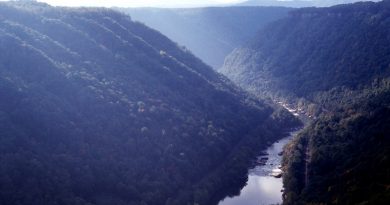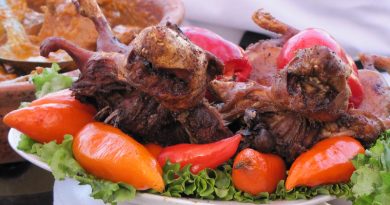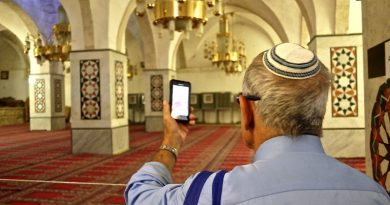A Short History of Scotland
In 2013, a famous Spanish tarot card reader predicted Scottish independence the following year, a vision that was greatly welcomed by the Scots, as they themselves believe in the gift of “Second Sight” that was handed down through certain Scottish families and produced a range of famous seers in the medieval ages and beyond.
Ironically, most people around the globe already consider Scotland to be independent, courtesy to William Wallace and Mel Gibson’s Braveheart, the distinct Scottish accent, way of dress, Nordic mentality and their ongoing vocal discontent of Downing Street and Buckingham Palace.
Numerous myths and legends surround the upper third of the British isle, covering historical facts and figures in a numinous mist that is so typical for the land, which was settled as early as 10,000 BC. It became a prominent in the history books only with the arrival of the Roman Empire, and since then suffered the standard fate of other European lands – blood and battle, defeat and victory, union and division.
The Scottish shores were a primary landing spot for the Viking tribes of Denmark and Norway, who settled on the island eventually in the 11th century and merged their culture with the existing Anglo-Saxon culture.
Wars of Independence
The best-known parts of Scottish history, however, begin with its Wars of Independence in the 13th and early 14th century, and the nostalgic sounds of Scottish bagpipes remind one of William Wallace’s tragic fate and the unfulfilled promise of freedom.

Wallace was brutally executed in 1305 after being captured after several stunning victories over the English, notably at Stirling Bridge at Stirling – a key city in the country’s warring past.The Wallace Monument in Stirling celebrates Scotland ‘s most famous freedom fighter .
At Stirling Castle – a mighty clifftop castle overseeing lush farmland which was was a home for later Scottish monarchs , there is a statue of Robert the Bruce who fought on in a battle for independence , eventually won within sight of the castle at the Battle of Bannockburn in 1314.

There is also an arresting equestrian statue of Robert the Bruce in the field of Bannockburn where he achieved his dazzling victory in the face of an English onslaught .

The Scottish Kings
But the Scots remained at war with England for the next 300 years until the Union of the Crowns, which was triggered after Elizabeth the 1st of England died without an heir , James V1 of Scotland , son of Elizabeth’s cousin , Mary, had the strongest claim to the throne .
His mother was Mary Queen of Scots , a Catholic Queen at a time of a growing Protestant – Catholic divide throughout Europe during the Reformation.Mary had many critics including the zealot Scottish preacher, John Knox, and she was eventually captured and beheaded by the English who felt she was manoeuvring to claim the English throne as well
In the mid-16th century, Scotland was still a very rural, agricultural economy, poverty-stricken and with a low life expectancy of the lower, serving class. James VI of Scotland, from the House of Stewart, had been crowned King of England in 1603 and the Stuarts reigned over both Scotland and England until the death of Queen Anne in 1714.


The Jacobite Rebellion
Religious conflict emerged again when King James VII was forced to abdicate in favour of his daughter Mary and her husband William of Orange, after he had turned to Roman Catholicism, which had sparked an outrage amongst the Protestants. James fled to France seeking support, and Prince William took the throne, something that a group of resistance fighters and devoted followers of James and his son Charles Edward Stuart (‘Bonnie Prince Charles’) would never forgive and accept.
These followers became known as the Jacobites (James reads Jacobus in Latin), and their uprisings between 1688-1746 are equally admirable as they were unsuccessful. Although many Jacobites came from the Western Highlands, it was a mix of highlanders and lowlanders, French and Irish, who supported the rebellions, before finally being defeated in the Battle of Culloden in 1745. It became treason to openly support the Stuart claim to the throne after the battle, so supporters and loyal friends of Bonnie Prince Charles produced a secret ritual involving a secret portrait of the Prince, which only strengthened the romantic, secretive notion of the rebellion. They would raise their glasses in a toast to a tray holding a silver goblet with the portrait of Bonnie Prince Charles elegantly painted on its lower middle part, once servants and ladies had withdrawn from the dinner table; if there was danger of interruption, the setup could easily be dismantled and hidden away. The goblet can be found in a small museum in the Western Highlands, along the route of the Jacobite train, named in honour of West Highlanders supporting the Stuart claim. The small town itself is named after William of Orange, and was famously besieged for two weeks by Jacobites, who had taken the other two forts nearby, but failed to conquer Fort William.
Act of Union
The Union between Scotland and England in the early 18th century has remained in place ever since .Scottish regiments have been a critical fighting force in the British Army . And during and after the Industrial Revolution. Glasgow, the second biggest city in the United Kingdom, became known as “the engine of the empire , as a key producer of industrial goods.
A Scottish Parliament was established in 1997 after an absence of nearly 300 years . A referendum for Scottish independence from England was defeated in 2014.
Destination – Scotland




